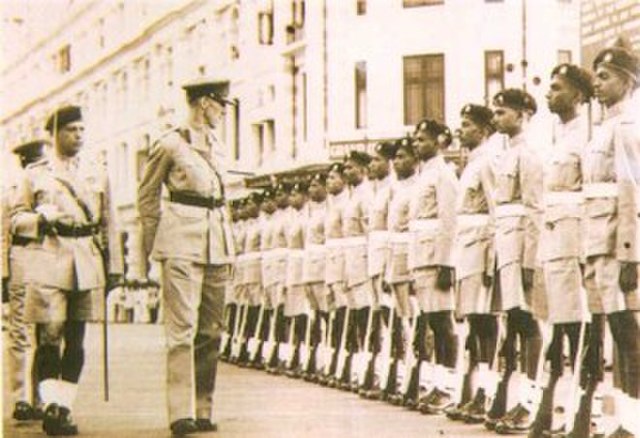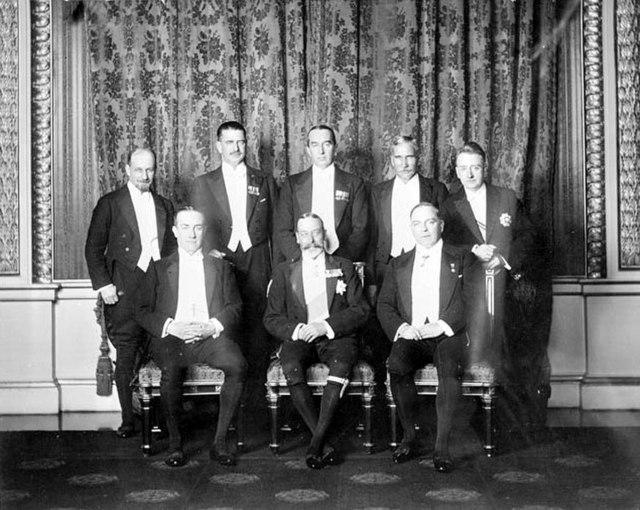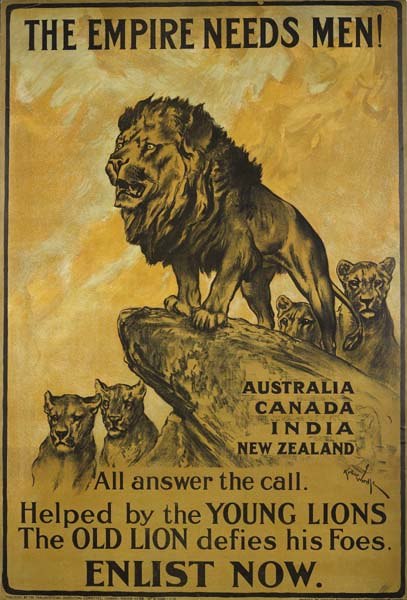Ceylon was an independent country in the Commonwealth of Nations from 1948 to 1972, that shared a monarch with other dominions of the Commonwealth. In 1948, the British Colony of Ceylon was granted independence as Ceylon. In 1972, the country became a republic within the Commonwealth, and its name was changed to Sri Lanka.
Don Senanayake, the first prime minister of Ceylon
The Earl of Caithness inspecting a guard unit
Image: King George VI LOC matpc.14736 (cleaned)
Image: Queen Elizabeth II official portrait for 1959 tour (retouched) (cropped) (3 to 4 aspect ratio)
A dominion was any of several largely self-governing countries of the British Empire. Progressing from colonies, their degrees of colonial self-governance increased unevenly over the late 19th century through the 1930s, and some vestiges of empire lasted in some areas into the late 20th century. With the evolution of the British Empire into the Commonwealth of Nations, finalised in 1949, the dominions became independent states, either as Commonwealth republics or Commonwealth realms.
King George V (front, centre) and his Prime Ministers at the 1926 Imperial Conference.
The Parliamentary Recruiting Committee produced this First World War poster. Designed by Arthur Wardle, the poster urges men from the Dominions of the British Empire to enlist in the war effort.
Dominion of Canada Postage Stamp, 1898
The prime ministers of Britain and the four major Dominions at the 1944 Commonwealth Prime Ministers' Conference. Left to right: William Lyon Mackenzie King (Canada); Jan Smuts (South Africa); Winston Churchill (UK); Peter Fraser (New Zealand); John Curtin (Australia)








